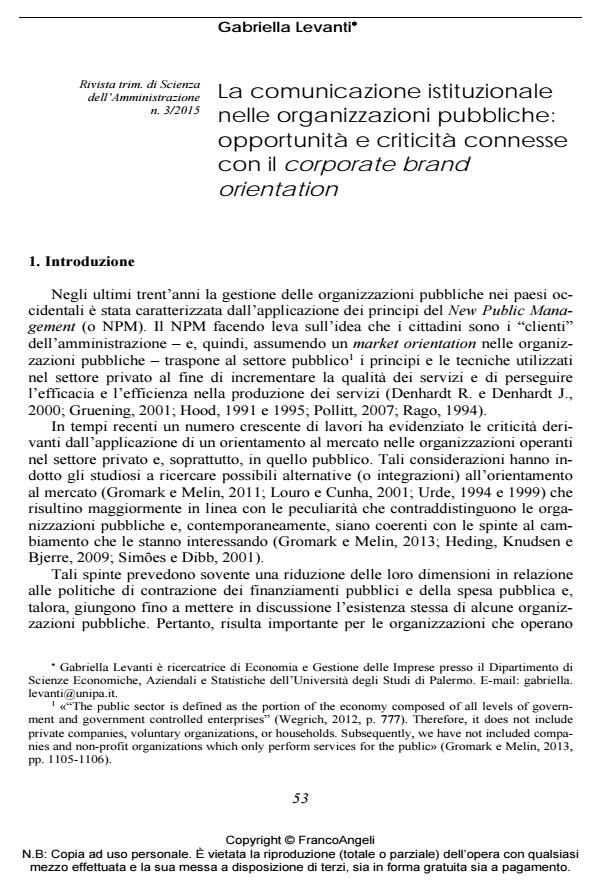Corporate communication in public sector organizations: the opportunities and challenges of a corporate brand orientation
Journal title RIVISTA TRIMESTRALE DI SCIENZA DELL’AMMINISTRAZIONE
Author/s Gabriella Levanti
Publishing Year 2015 Issue 2015/3
Language Italian Pages 14 P. 53-66 File size 111 KB
DOI 10.3280/SA2015-003004
DOI is like a bar code for intellectual property: to have more infomation
click here
Below, you can see the article first page
If you want to buy this article in PDF format, you can do it, following the instructions to buy download credits

FrancoAngeli is member of Publishers International Linking Association, Inc (PILA), a not-for-profit association which run the CrossRef service enabling links to and from online scholarly content.
Over the past thirty years, the New Public Management (NPM) has been the dominant approach in the public sector. Leveraging the idea that citizens are customers of the administration, the NPM imports management principles and techniques from the private sector in order to improve the performance of public organizations. After a short description of the main problems associated with the implementation of market orientation in the public sector, this article examines corporate brand orientation as an interesting alternative to market orientation in the public context. Corporate brand orientation provides a holistic and balanced perspective on an organization that is able to enhance and take advantage of the distinctive characteristics of public organizations. More in detail, the article highlights the opportunities related to the creation of strong public corporate brands. Then, it discusses the potential challenges of introducing corporate branding activities in public organizations.
Keywords: Corporate communication - corporate brand - public sector
Gabriella Levanti, La comunicazione istituzionale nelle organizzazioni pubbliche: opportunità e criticità connesse con il corporate brand orientation in "RIVISTA TRIMESTRALE DI SCIENZA DELL’AMMINISTRAZIONE" 3/2015, pp 53-66, DOI: 10.3280/SA2015-003004